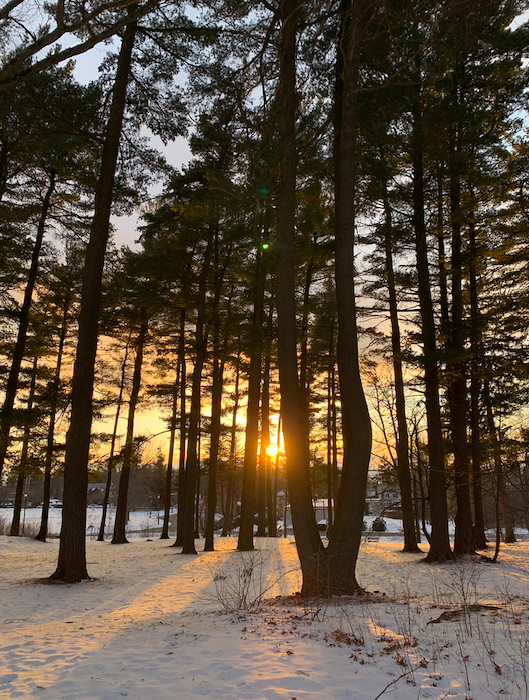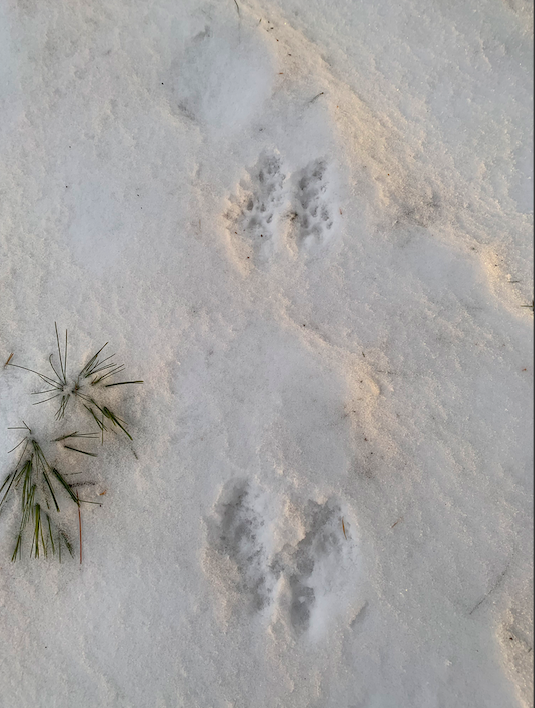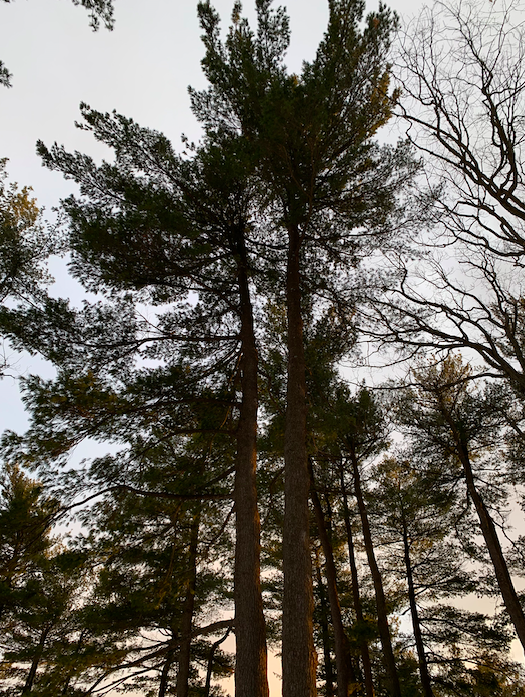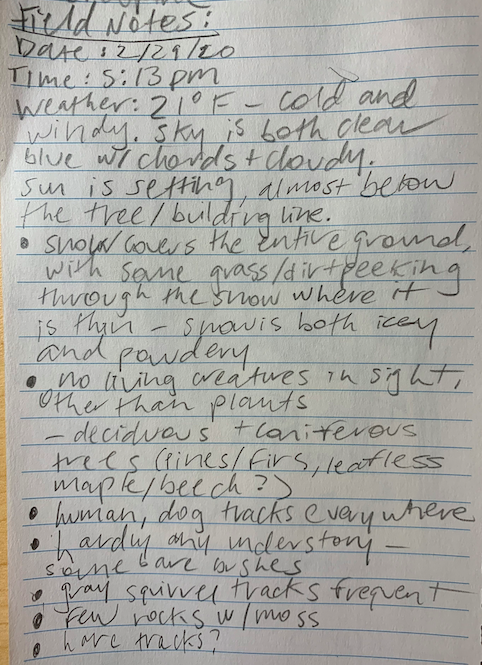
When I visited the Redstone woods for this February visit, I saw little wildlife activity, but it was still a lovely scene; as the bright sun was setting, orange and yellow filled the sky and sunbeams illuminated the tall Eastern white pines. I only saw the tracks of humans, dogs, and gray squirrels in the area – aside from these tracks, there were no signs of life during this visit, and it was silent except for occasional cars or students passing by in the distance. There were no birds in the trees or small creatures that I could see.


The gray squirrel is a major component of this small patch of woods; because the area isn’t large, and the trees are spread apart a decent amount, larger animals wouldn’t be able to occupy this space. Squirrels, however, are small enough to get protection and food from this forest, so they are the primary species here; the home range of gray squirrels typically only ranges from one-25 acres (VT Fish & Wildlife Dept.). In the cold winter months of Vermont, gray squirrels take refuge in den trees with cavities about one-three feet deep with small entrance holes, and it is good to have a habitat with nut-producing trees, like oak and beech (VT Fish & Wildlife Dept.). On a typical day, this squirrel will only move about 160 feet due to a small habitat scope and a heavy reliance on trees (VT Fish & Wildlife Dept.). In the day, gray squirrels mostly look for and gather food, and they have to balance the energy they lose with the amount that they gain with sustenance, especially in cold temperatures; because gray squirrels are diurnal animals, they sleep at night and do their activities during the day, all the while avoiding predators and threats like humans and dogs (PA State University). The gray squirrel has multiple predators, such as snakes, weasels, skunks, and red foxes; however, their main threat consists of large birds like hawks and owls, who can swoop in from above (PA State University).
Although there aren’t many forms of wildlife in my patch of woods, there are many Eastern white pine trees, which are an important factor in the life of the squirrels here. Gray squirrels eat the seeds, bark, and foliage of white pines, as well as use them for shelter from threats; it is very valuable for nutrient and protective purposes, and the gray squirrel couldn’t exist here without it (Adirondacks Forever Wild). Squirrels also have a significant interaction with beech trees, where some are present in the Redstone woods. Gray squirrels will strip the thin bark of beech trees in order to fill their nutritional needs, as well as for constructing their dreys (Wildlife Online).
Since my last visit, there haven’t been too many phenological changes to my spot in the woods. There is a similar amount of snow, with possibly a slight amount more than in January due to recent meltings and freezings. The understory is largely nonexistent, and the canopy of trees remains the same, with buds on the ends of tree branches and no leaves on the trees aside from evergreen needles. Wildlife is hidden, aside from the tracks of animals passing through.

References
Adirondacks Forever Wild. (n.d.). Eastern White Pine. Retrieved from
https://wildadirondacks.org/trees-of-the-adirondacks-eastern-white-pine-pinus-strobus.html
Pennsylvania State University. (2002). Eastern Gray Squirrel. Retrieved from
https://www.psu.edu/dept/nkbiology/naturetrail/speciespages/graysquirrel.htm
VT Fish and Wildlife Department. (2020). Gray Squirrel. Retrieved from
https://vtfishandwildlife.com/learn-more/vermont-critters/mammals/gray-squirrel
Wildlife Online. (2020). Squirrel Interaction with Humans – Damage to Forestry. Retrieved from
https://www.wildlifeonline.me.uk/animals/article/squirrel-interaction-with-humans-damage-to-forestry
